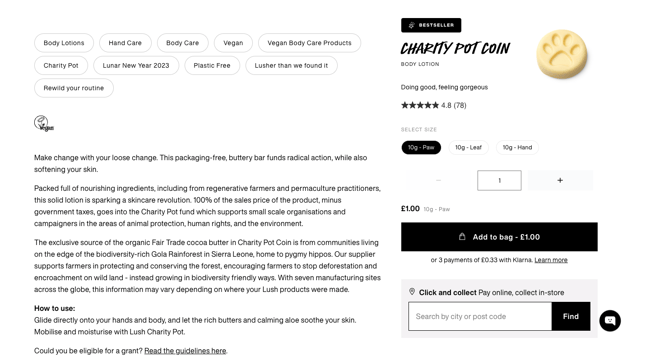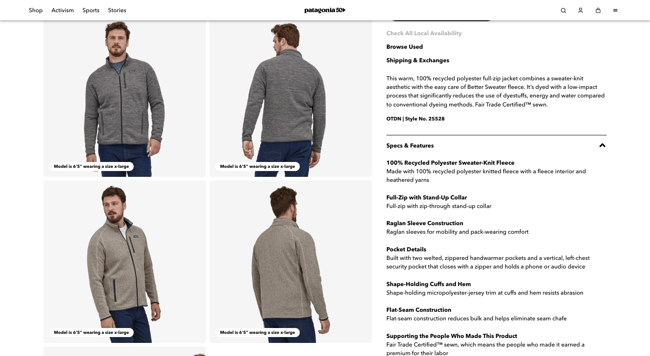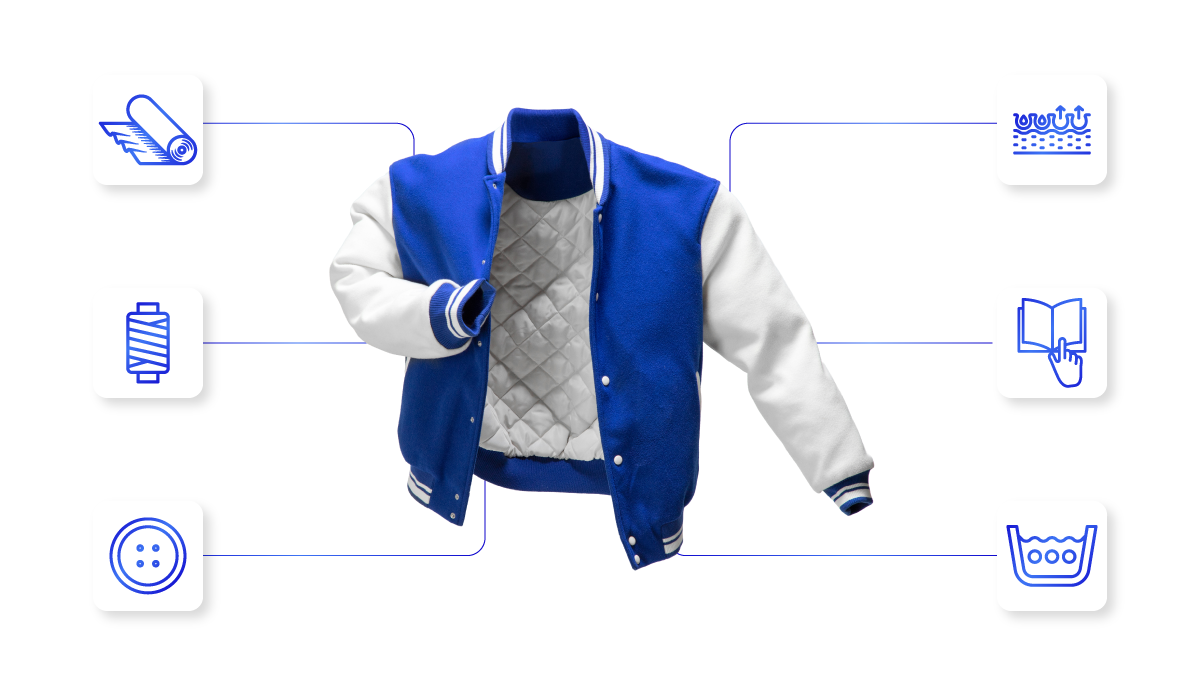Sustainability in Retail: How Product Data Can Support Conscious Consumers
%20copy.png?width=1200&height=675&name=Product%20information%20quality_blog%20post_1200%20x%20675%20(4)%20copy.png)
Sustainability has become one of the most significant trends for me to watch, and I believe it will be growing in importance in many industries, especially in eCommerce, in the upcoming years.
eCommerce must become greener as its pace has accelerated during the pandemic, and this trend will continue. The value of global retail eCommerce sales is predicted to reach about 8.1 trillion dollars by 2026.
Sustainable consumer attitude is a result of serious concern that the Earth is getting warmer and warmer. Now we use about 60% more of the Earth’s resources than it can regenerate yearly.
We can’t carry on like this anymore. It is no longer possible to ignore the alarming data that raises questions such as: How can we fix the mistakes of the consumerism era of the last 20-30 years? What I, as a person can, do to contribute to getting things better and decreasing the effects of global warming?
It is more important than ever for individuals and businesses to take responsibility for their impact on the environment. As consumers, we have the power to promote sustainability through our purchasing decisions.
However, making informed and sustainable choices can be difficult without accurate and comprehensive product information providers by retail companies and their suppliers.
Let's think about purchasing an electric car. Such a purchase carries a higher cost and changes in habits. It must be well thought out. Therefore, a buyer needs support and reliable, accurate product information to decide.
That is why in this article, I want to share how retail brands can showcase sustainability in their product using product information to support customers in making sustainable choices.
I will also mention the role of legislation and technology in keeping up product data clear to make life easier for both parties: commerce businesses and consumers.
Sustainability Trends: The Growing Demand for Eco-Friendly Products
With the sustainable trend rising, businesses increasingly focus on how they can reduce their environmental impact. Transparency is also becoming more important, with consumers demanding to know more about the origins and production of the products they buy.
For Millenials and Gen Z, sustainability is one of the important factors. Moreover, Gen Z shoppers are driving the power of sustainable shopping, and they influence other generations to become more environmentally conscious.
Let's take a closer look at these particular sustainability trends. They refer to information that conscious and savvy consumers are often looking for.
#1 Circular Economy
The circular economy focuses on reducing the use of virgin resources and instead emphasizes the reuse, remanufacturing, and recycling of materials.
The aim is to create a sustainable and regenerative economy – one that is not reliant on the finite resources of the planet. For example, did you know that preventing 1 ton of paper waste saves between 15 and 17 mature trees?
#2 Eco-Friendly Packaging
This trend is driven by consumers who seek out environmental alternatives to traditional packaging materials, such as plastic. In response, companies are introducing packaging made from recycled, recyclable, or compostable materials and using more sustainable materials practices such as reducing packaging size and weight.
The shift towards eco-friendly packaging helps to reduce carbon emissions, reduce waste, and protect the planet for future generations.
Among global brands investing in sustainable packaging is Calvin Klein, which claims that 75% of its packaging is already recyclable and has set a goal to eliminate unnecessary waste by 2030.
Another interesting example is the eco-package introduced by Samsung, which can be repurposed into household items, such as houses for pets or bookshelves.

DOWNLOAD FREE E-BOOK
Preparing for the Digital Product Passport Regulation
Is your business ready for the digital product passport (DPP) regulation? Our all-in-one guide breaks down everything you need to get yourself prepared.
#3 Fairtrade & Ethical Supply Chain
Consumers become interested in purchasing goods produced in a way that promotes fair wages, safe working conditions and minimizes environmental harm. That has led businesses to prioritize fairtrade and ethical practices to maintain their reputation and market share.
Additionally, governments and international organizations are implementing stricter regulations and standards to ensure responsible sourcing and production, pushing companies to adopt ethical supply chain practices.
#4 Transparency
Consumers want to know where their goods come from, how they are made, and the impacts they have on workers, communities, and the environment. As ethical and sustainable practices become increasingly important, so does the demand for transparency.
Social media makes access to this information and dialogue between businesses and consumers easier. This increased connectivity has enabled consumers to scrutinize and hold businesses accountable for their actions, thereby driving the need for transparency.
#5 the Rising Role of Artificial Intelligence
AI can be a powerful technology for environmental protection actions as it has the potential to improve the efficiency of production and reduce environmental risks, as well as develop smarter ways of using resources and energy.
AI-based tools can help identify potential solutions to environmental issues, such as mapping deforestation and monitoring water quality, and in general, lead to better decision-making.
Many retail brands, including Zara and Sephora, use AI to analyze their supply chain and personalize shopping experiences.
How Can a Product’s Data Convey Its Sustainability?
Product information plays a crucial role in shaping consumer choices, particularly for online purchases. When shopping online, consumers rely on product descriptions, labels, and certifications to determine the sustainability of a product.
However, inaccurate or incomplete product information can lead to unintended negative impacts on the environment.
For example, a product may be marketed as eco-friendly or sustainable, but without clear and detailed information about the materials, manufacturing process, or disposal options, consumers may unknowingly purchase products that have a significant carbon footprint, contribute to waste, or harm animals.
Another thing is the number of returns. Just imagine eCommerce customers disappointed with the product's actual state, which is inconsistent with the description.
This means the risk of returns, which many retailers try to make accessible by offering free returns in stores and through many types of delivery. An increasing number of returns is certainly not related to retail sustainability actions.
Sustainability Messaging in Product Data
Customers look for various kinds of information contained in product descriptions or on product pages when they determine how sustainable the product is.
Here are some examples:
-
Ingredients and materials. Consumers are interested in knowing the composition of the product and whether the ingredients or materials used are environmentally friendly, non-toxic, renewable, and ethically sourced.
-
Packaging. It is another important factor for sustainability-conscious consumers who are looking for materials that are recyclable, biodegradable, or made from recycled content. They may also seek information on the company's efforts to minimize packaging waste.
Energy and resource use. Information about energy and resource consumption throughout the product's life cycle is valuable. Consumers want to know if the product is energy-efficient, water-efficient, and whether it minimizes waste during manufacturing and usage.
-
Carbon footprint. Consumers are also increasingly concerned about a product's carbon footprint, which includes greenhouse gas emissions associated with its production, transportation, and disposal. They may look for products with lower carbon emissions or companies that offset their emissions.
-
Certifications and labels. Environmentally conscious shoppers rely on certifications and labels to verify the sustainability claims made by a product or company. Examples include organic certifications, Fair Trade labels, Forest Stewardship Council (FSC) certification for wood products, PETA cruelty-free certification for products non-tested on animals, and ENERGY STAR ratings for energy-efficient appliances.
-
Social responsibility and supply chain transparency. This sustainability attitude is reflected by the information about fair labor practices, worker welfare, human rights, diversity and inclusion initiatives, and community involvement. Consumers may want to know if the company sources materials ethically, avoids conflict minerals, supports local communities, and ensures fair trade practices.
-
Product lifespan and durability. People who are close to the less waste philosophy prefer products that are durable, long-lasting, and designed for repairability. They may seek information on the product's expected lifespan, warranty, and availability of spare parts.
-
Product end-of-life management. Information on how the product can be disposed of or recycled at the end of its life is essential. Consumers want to know if the product is easily recyclable, if the company offers take-back programs, or if it is designed for circularity or up-cycling.

LUSH informs its shop visitors about a product's ingredients and all sustainable actions connected to it. Source: LUSH Cosmetics
Of course, your consumers may pay attention to different factors. Nonetheless, these categories encompass the primary types of information consumers generally seek when assessing a product's sustainability.
As you see, it is all about brand transparency and the completeness of the information.
Digital Product Passport (Dpp)
The legislation also plays a key role in promoting sustainability among businesses. International directives can push companies to become more transparent. One of the examples is Digital Product Passport (DPP), proposed by the European Commission.
Digital product passports (DPPs) are standardized digital documents that contain essential information about products, such as product specifications, components, materials, manufacturing processes, and environmental impact data.
The document can allow different stakeholders to access and share information seamlessly, regardless of their specific technological infrastructure, and promote sustainability by providing information on materials, manufacturing processes, and disposal instructions.
One of the key purposes of the DPP is to help regulatory bodies ensure compliance with product safety, environmental, and ethical standards and can promote responsible business practices.
The product passport legislation framework (Ecodesign for Sustainable Products, ESPR) is expected to come to a decision during the spring of 2024.
I believe it will be a game-changer for the whole industry.
How Can Retailers Support Consumers in Making Sustainable Choices?
Retailers can boost consumer confidence and facilitate purchase decisions by highlighting their values in their brand story and effectively utilizing product information to shape a great product experience.
Here's a brief explanation of how they can achieve this:
Detailed Product Descriptions
If you want to introduce your retail sustainability actions to shoppers, provide comprehensive and accurate descriptions of your products.
This includes highlighting key features, specifications, materials used, dimensions, and any other relevant details mentioned above (like carbon footprint and eco-certification).
Clear and specific information helps consumers understand what they are buying and increase their confidence that they are making the right choice.

In its product descriptions, Patagonia also informs about fair trade actions and allows to browse used items of specific products. Source: Patagonia
High-Quality Visuals
Another essential element of providing rich product content is to offer high-resolution images and, if possible, product videos that showcase the item from different angles.
Visuals help consumers visualize the product, assess its quality, and get a realistic sense of what they will receive. Including zoom and 360-degree view, options can further enhance the consumer's confidence in the product.
Customer Reviews and Ratings
Integrating customer reviews and ratings on product pages allow potential buyers to access firsthand experiences from others who have already purchased the item.
Positive reviews and high ratings serve as social proof and instill confidence in the product's quality and performance.
Pay attention to it by actively encouraging customers to leave reviews after their purchase.
Expert Opinions and Recommendations
Retailers can collaborate with industry experts or influencers to provide their insights and recommendations on products.
Expert opinions can help consumers make informed decisions by considering factors such as performance, durability, or suitability for specific needs.
Clear Return and Refund Policies
A transparent and customer-friendly return and refund policy can alleviate concerns about making a wrong purchase. Clearly communicate the terms and conditions, including the return window, process, and any associated costs.
By offering hassle-free returns and refunds, retailers demonstrate their commitment to customer satisfaction and enhance confidence in buying from them.
Product Comparisons and Guides
Comparisons and buying guides can help consumers evaluate different options and choose the right product.
These resources provide valuable information, highlighting the features, pros, and cons of various products, and helping customers make confident purchase decisions.
By employing these strategies, retailers can effectively leverage product information to boost consumer confidence and facilitate purchase decisions. Ultimately, this helps build customer loyalty and drives business growth.
Enhancing Product Information with PIM Software
The Challenges of Obtaining the Right Information
Navigating the labyrinth of eco-friendly claims and deciphering complex labeling can be a daunting task. There are some broad challenges, like the complexity of supply chains, the limitations of labeling schemes, and the difficulties in verifying claims that pose hurdles to obtaining reliable information.
Addressing these challenges requires collaborative efforts between companies, regulatory bodies, and consumers themselves.
Transparency, standardization, and enhanced monitoring mechanisms can empower consumers to make well-informed choices, encouraging a more sustainable marketplace.
However, retailers can do their best starting from now by managing their product information to reach consumers with the right message (highlighting the sustainability of their products) at the right time and through the right channel.
How to Use Product Information Management (PIM) Platform?
Customers rely heavily on accurate and comprehensive product information to make informed purchase decisions.
If you have more than 500 products and product variants in your portfolio or operate globally with your retail business, it is extremely difficult, if not entirely impossible, to maintain product data quality manually.
This is where Product Information Management (PIM) platforms come into play.
A PIM platform acts as a centralized hub that enables retailers to manage, enrich, and distribute product data across various channels.
Moreover, PIM platforms enable teams to cooperate within the organization and in line with external users like marketing agencies and suppliers.
Product Information Management platform plays a key role in providing consumers with accurate, comprehensive, and enriched product information tailored not only to product pages but also to social media platforms and marketplaces.
The technology-driven approaches to product information management can boost consumer confidence, foster trust, and ultimately drive business growth in today's competitive marketplace.
Final Thoughts
Enriched and correct product information is essential for promoting sustainability in online purchases.
As consumers, we can make a difference by being thoughtful with product information and choosing eco-friendly options. Retailers can support consumers by informing them fully and transparently about the products.
This cooperation based on product data is a vital step towards sustainability. Together, through transparent product information and conscious purchasing decisions, retailers and consumers can make a real difference in building a greener economy.
To empower your consumers to make more sustainable choices, implementing PIM is a must. Have a chat with our consultants today to learn how Bluestone PIM can help you improve your product data quality, streamline sustainability messaging, and support environmentally-conscious customers. Schedule a demo to see our platform in action and find out how it can advance your sustainability marketing initiatives.




